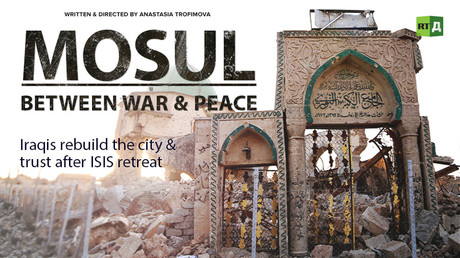Australia admits more possible killings of civilians in Mosul bombing
Following a year-long investigation, the Australian military has admitted that it ‘may have killed’ civilians when its F/A18 Super Hornet fighter jets pounded a Mosul neighborhood in Iraq two years ago.
“Ultimately we have determined that it is possible civilians were unintentionally killed by the Coalition during these strikes,” Chief of Joint Operations Air Marshal Mel Hupfeld said in a statement Friday.
Reports that the Australian warplanes claimed dozens of civilian lives while conducting a sortie in Mosul’s Al Shafaar neighborhood on June 13, 2017 were spread via Airwars, a website which tracks civilian casualties from Western airstrikes. The Australian Defense Forces launched their own investigation into the claims half a year later, after being alerted by their US allies in January 2018. Australia is part of the US-led coalition of nations which was gathered to fight the terrorist group Islamic State (IS, formerly ISIS/ISIL).
It was alleged that up to 34 people may have been killed as result of the raid that targeted a courtyard and a building, both believed to be IS outposts in the area. While the Australian military conceded that the bombing might have also killed civilians in a nearby building, they argue that the death toll is much smaller than was initially estimated. The Australian military believes between 6 and 18 civilians were killed. Investigators took population density into account when they determined the potential loss of civilian life, the Sydney Morning Herald reported.
READ MORE: Mosul & Aleppo: What MSM didn’t tell you happened after liberation of 2 cities (PHOTOS)
That assessment, however, stressed that there is no certainty that the civilians were killed by Australian airstrikes, as there are several other possible explanations for their demise, Hupfeld noted. The civilians might have died as a result of an Iraqi or an international coalition operation, or might have been killed by ISIS militants, he said.
Australia’s Defense Minister Christopher Pyne made the same point, saying that “in the fullness of transparency” Australia is “prepared to say we could have been responsible” despite a lack of clarity on the matter. He said there would be no repercussions for the pilots, “because they were doing exactly the job they were supposed to do.“
It is not the first time Australia has taken responsibility for civilian casualties in Mosul. In March, the Australian military said that the allegations that it killed two adults and injured two children in a coalition airstrike on Mosul on May 3, 2017, were “credible.”
Having flown its first combat mission in Iraq in September 2014, Australia wrapped up its contribution to the anti-terrorist campaign in December 2017. It withdrew its jets from Iraq after carrying out 2,750 sorties and clocking over 21,000 flying hours.
The rare admission of civilian casualties coincides with the publication of an updated death toll by the US-led coalition. It acknowledges that at least 1,190 civilians have been “unintentionally killed” since the start of the campaign in Syria and Iraq in 2014. During the past month, the coalition reviewed 12 casualty reports, five of which it deems to be credible, it said in a statement. They alone account for 51 civilian deaths. In addition, the coalition has yet to comb through 182 reports subject to investigation.
In the months leading to Mosul’s liberation, the coalition ramped up its assault on the city, drawing accusations it was indiscriminately bombing houses with civilians inside.
The heavy airstrikes reduced Iraq’s second largest city to ruins, prompting Amnesty International to call for a war crimes probe into the coalition and IS.
It has been also long speculated that the civilian death toll is much higher than it is officially claimed. A cross-examination of databases compiled by non-governmental organizations and completed by AP in December 2017 showed that from 9,000 to 11,000 civilians perished in the battle of Mosul, with at least 3,200 of them killed by US-led coalition airstrikes, artillery fire or mortar rounds between October 2016 and July 2017 alone.
Think your friends would be interested? Share this story!






Comments are closed.